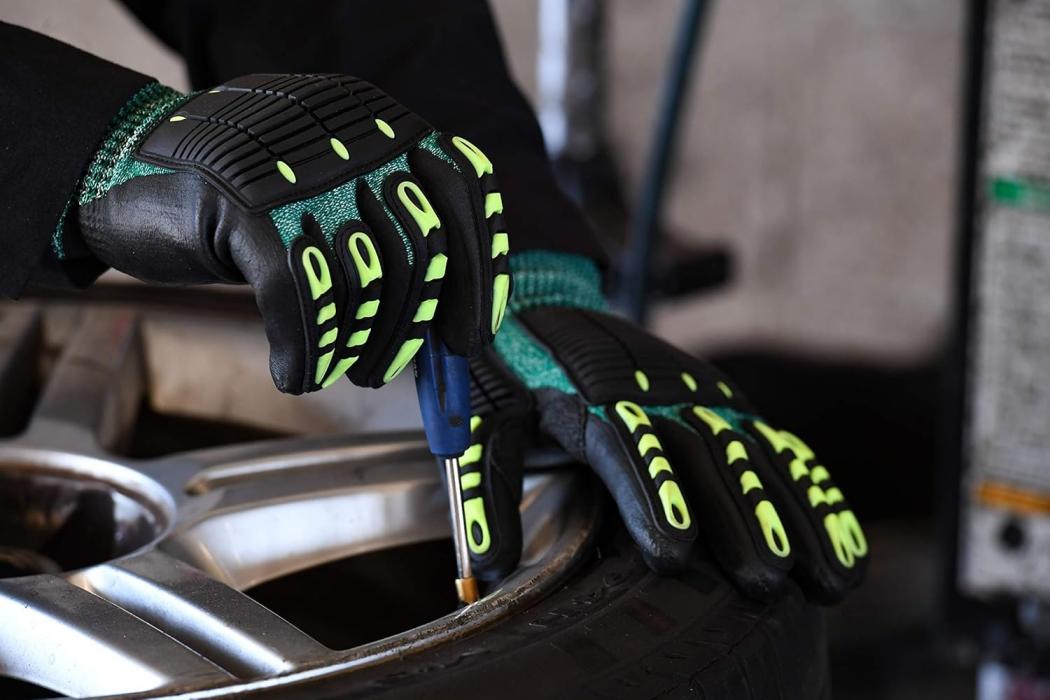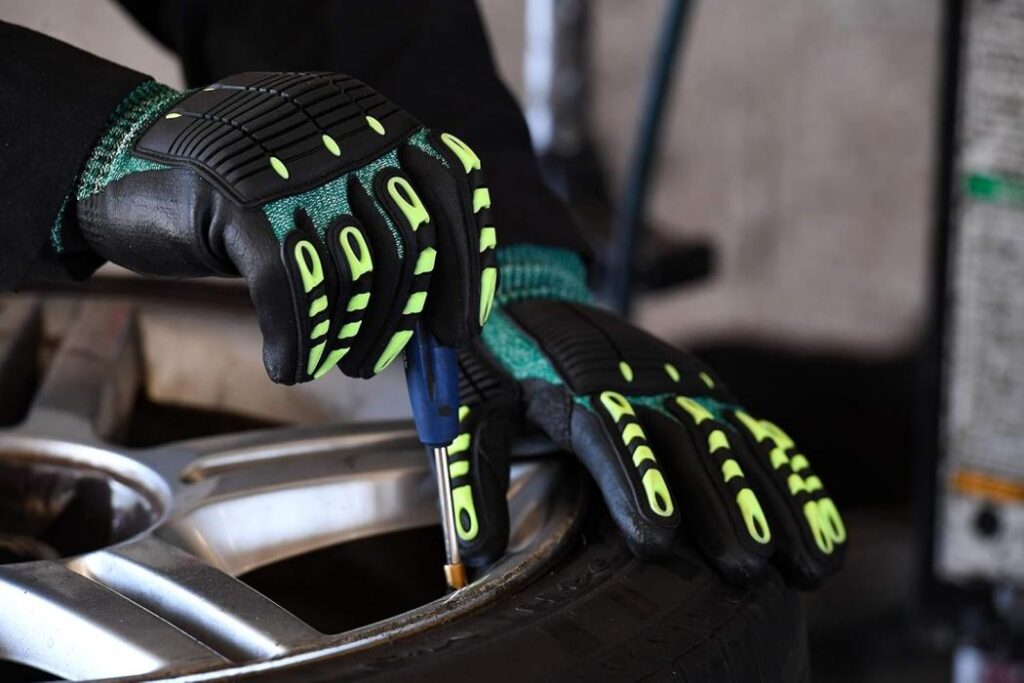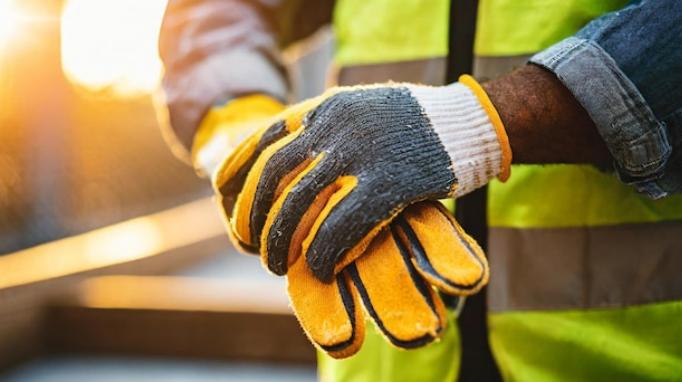Subscribe for NMSafety News
Protective Gloves Certification: What Every Employer Must Know
By hqt

Protective gloves are a vital part of workplace safety, but not all gloves are created equal. Protective gloves are a critical part of ensuring that workers are shielded from potential injuries, such as cuts, punctures, burns, and chemical exposure. It's essential for employers to understand the certification standards that govern them. In this article, we'll dive into why Protective Gloves Certification matters and what every employer must know to protect their workforce. Stay tuned to find out how choosing the right gloves can make all the difference in worker safety.

Why Protective Gloves Certification is Crucial?
The certification of protective gloves is more than just a technical requirement - it's a key factor in safeguarding employees against workplace injuries. Certified protective gloves undergo rigorous testing to ensure that they meet the necessary safety standards. These gloves are designed to protect workers from various mechanical risks, chemical hazards, and even extreme temperatures, depending on the nature of the work.
For employers, understanding and adhering to protective gloves certification standards means taking a proactive approach to worker safety. Certified gloves ensure that workers are equipped with reliable protective gear that performs as promised. Without certification, employers risk providing subpar gloves that may not offer the protection needed, leaving workers vulnerable to injury. When employers choose certified gloves, they demonstrate a commitment to workplace safety and compliance. Moreover, certified gloves help employers avoid legal liabilities that could arise from non-compliance with safety regulations.
Key Protective Gloves Certification Standards
Different industries face different risks, and understanding the specific certification standards for protective gloves is essential for making the right choice. Here are the key certification standards that employers should be aware of when selecting protective gloves for their workplace:

EN 388 – Protection Against Mechanical Risks
The EN 388 standard is widely recognized in Europe and focuses on mechanical protection, which is vital for workers in industries such as construction, manufacturing, and logistics. This certification tests gloves for their resistance to abrasion, cuts, tearing, and puncturing. Gloves are rated on a scale of 1 to 4, with 4 being the highest level of protection. For employers in high-risk environments, choosing gloves that meet the EN 388 standard is crucial for protecting workers from hand injuries.
EN 374 – Protection Against Chemicals and Microorganisms
For industries where workers are exposed to chemicals, such as pharmaceuticals, laboratories, and manufacturing, the EN 374 certification is essential. This standard ensures that gloves protect against hazardous chemicals and microorganisms. Gloves tested under EN 374 are subjected to specific tests to ensure they can resist chemical degradation and provide adequate protection against exposure to dangerous substances.
ANSI/ISEA 105 – U.S. Standard for Protective Gloves
In the United States, the ANSI/ISEA 105 standard is widely used for evaluating protective gloves. This standard categorizes gloves based on their performance level in various protection categories, including cut resistance, abrasion resistance, and puncture resistance. Understanding the ANSI/ISEA 105 ratings helps employers select the appropriate gloves for their workers' tasks, ensuring maximum protection while complying with U.S. safety regulations.
EN 407 – Protection Against Thermal Risks (Heat and Fire)
The EN 407 standard is crucial for workers exposed to heat and fire risks. It evaluates gloves for their ability to protect against thermal hazards, including flame resistance, contact heat, convective heat, and radiant heat. Workers in industries such as welding, metalworking, and fire-fighting are often required to wear gloves certified under this standard. Gloves are rated based on their performance in these tests, with higher ratings indicating better protection against extreme temperatures.
EN 511 – Protection Against Cold
For workers who operate in cold environments, such as those in cold storage, refrigeration, or outdoor construction, the EN 511 certification ensures that gloves provide adequate protection against low temperatures. This standard tests gloves for thermal insulation and water permeability. Gloves that meet the EN 511 standard are rated for their effectiveness in keeping hands warm and dry, even in freezing conditions. It is essential for employers in colder environments to select gloves that are certified to this standard to prevent frostbite and other cold-related injuries.
EN 420 – General Requirements for Protective Gloves
The EN 420 standard sets the general requirements for protective gloves, covering aspects such as sizing, comfort, and marking. It also ensures that gloves are free from harmful substances that could pose a risk to the wearer. While this standard does not focus on specific protection types like mechanical or chemical hazards, it is an essential certification for all gloves to meet. Compliance with EN 420 ensures that the gloves are designed for practical use, are comfortable, and are safe for extended wear.
ASTM D6319 – Nitrile Rubber Gloves
For employers in industries that require nitrile gloves, the ASTM D6319 standard ensures that the gloves meet specific criteria for physical properties such as strength, flexibility, and chemical resistance. This standard is widely used in industries like healthcare and food processing, where nitrile gloves are favored for their chemical resistance and ability to prevent allergic reactions associated with latex gloves.
ISO 21420 – General Requirements for Protective Gloves
The ISO 21420 standard is an international certification that provides guidelines for general glove performance, covering aspects like comfort, flexibility, and durability. This standard applies to all types of protective gloves, offering employers a comprehensive benchmark for glove safety. It helps ensure that gloves are suitable for everyday use while also meeting the required levels of protection against various hazards.

How to Select the Right Protective Gloves for Your Industry
Choosing the right protective gloves for your workplace is a task that should not be taken lightly. It requires an understanding of the specific hazards your workers face and selecting gloves that will provide the necessary protection. At NMSafety, we offer a wide range of gloves tailored to various industries, ensuring that you can find the best fit for your workplace needs. From cut-resistant gloves to chemical-resistant options, each product is designed to provide the highest level of safety and comfort.
Hazard Type and Task Requirements
Different tasks come with different levels of risk. For high-risk activities like chemical handling, welding, or working with sharp objects, specialized gloves that meet high certification standards are necessary. For example, our liquid-proof gloves made of synthetic rubber are ideal for workers exposed to chemicals and hazardous materials. Similarly, our cut-resistant gloves, available in multiple cut levels from Level 1 to Level 5, ensure hand protection during work with blunt objects or materials that pose a high risk of cuts and abrasions.
On the other hand, for tasks with a lower risk of injury, such as general assembly or light-duty work, basic gloves may be sufficient, but even these should meet the minimum certification standards to ensure protection. Polyethylene gloves are perfect for light tasks like food preparation or general cleaning, providing a cost-effective solution without compromising safety.
Material Selection and Durability
The material of the gloves plays a significant role in their performance. For example, leather gloves are ideal for mechanical tasks that require high abrasion resistance, such as construction or maintenance work. These gloves offer durability and long-lasting protection, making them a great option for heavy-duty tasks. For workers handling chemicals, rubber gloves are a popular choice, offering robust protection against chemicals and oils. At NMSafety, we also offer neoprene gloves, which are highly flexible, heat-resistant, and perfect for tasks involving wet handling or dishwashing.
Durability is key when selecting protective gloves. Gloves must withstand long-term use without losing their protective qualities. For example, our nitrile-coated gloves provide a fine grip while being incredibly durable. Nitrile gloves are highly versatile and suitable for a wide range of applications, from electronics assembly to general industrial work. The nitrile coating also offers resistance to oils and chemicals, ensuring that workers can perform their tasks safely.
Comfort and Fit
While safety should always be the top priority, comfort and fit are also crucial. Ill-fitting gloves can reduce dexterity, making it harder for workers to perform tasks efficiently. Whether it's cut-resistant gloves for construction workers or winter work gloves for employees working in cold environments, gloves must provide the right balance of protection and comfort. Winter work gloves, for example, are specifically designed to offer thermal insulation, allowing workers to handle tools and materials without sacrificing dexterity even in subzero temperatures.
At NMSafety, we ensure that our gloves are made from materials that offer a balance of comfort and protection. For workers who need to perform fine motor tasks, our electronic assembly gloves are the perfect choice. These gloves are designed to prevent electrostatic discharge (ESD), offering the required level of sensitivity while keeping workers protected from electrical hazards. We also provide fingerless gloves, which are great for jobs where tactile sensitivity and dexterity are required, such as fishing or forestry work.
Final Thoughts
Protective gloves are an essential part of any workplace safety strategy. By understanding the certification standards and choosing the right gloves for the specific risks your employees face, you can significantly reduce the likelihood of injuries and improve overall workplace safety. As a leading supplier of certified protective gloves, NMSafety has been committed to providing high-quality gloves that meet international standards since 1998. Our gloves are designed to deliver both superior protection and comfort, ensuring that your workforce remains safe and productive.
Don't compromise on safety. Choose NMSafety for reliable, certified protective gloves that help you comply with safety regulations while offering your workers the best protection available. Contact us today to learn more about our product range and ensure your workplace is properly protected.
Call to Action: Ready to upgrade your workplace safety? Get in touch with NMSafety for top-quality, certified protective gloves tailored to meet the specific needs of your industry.
